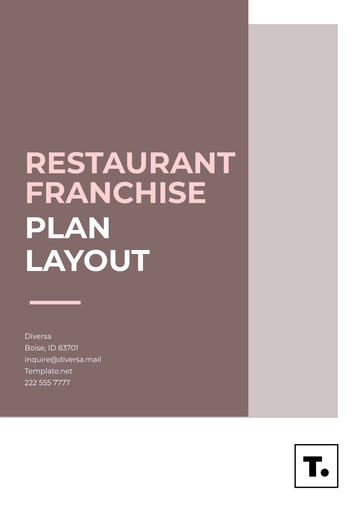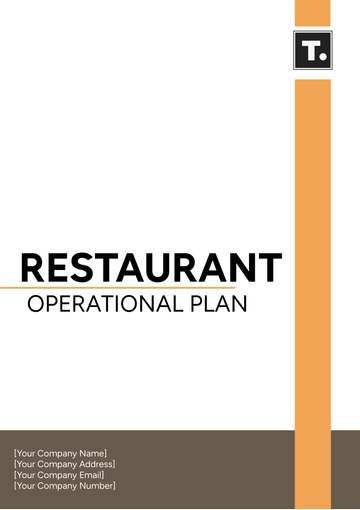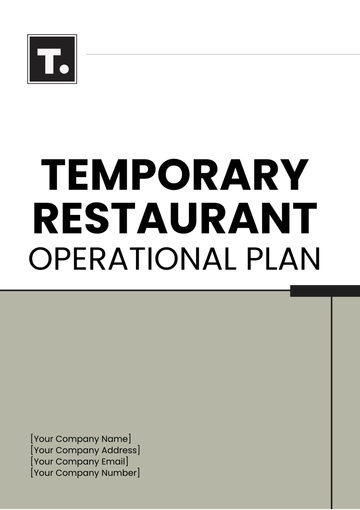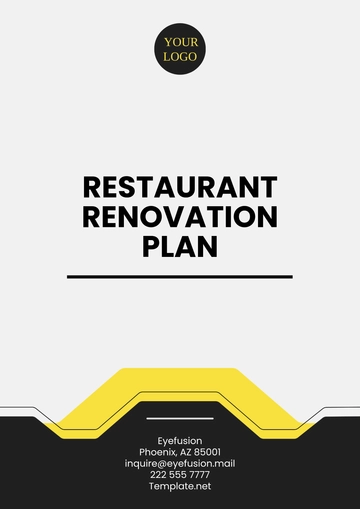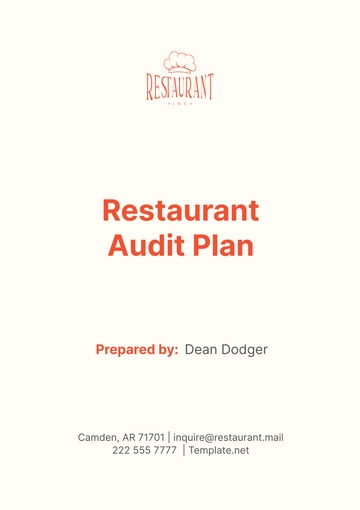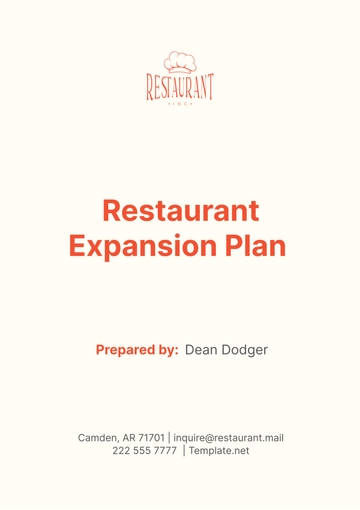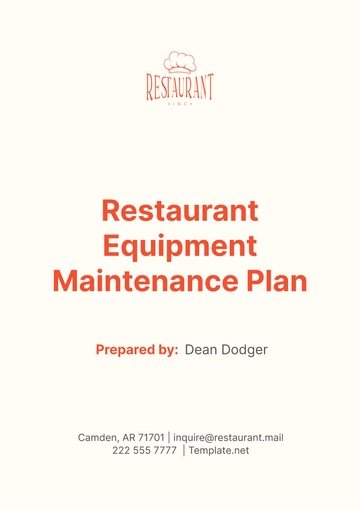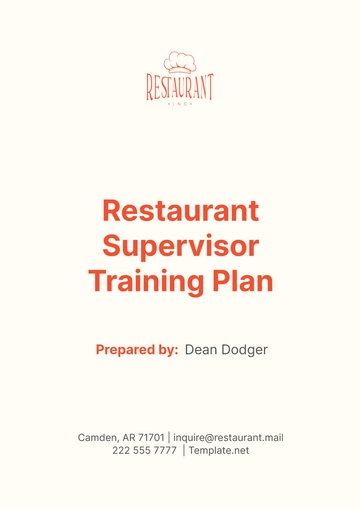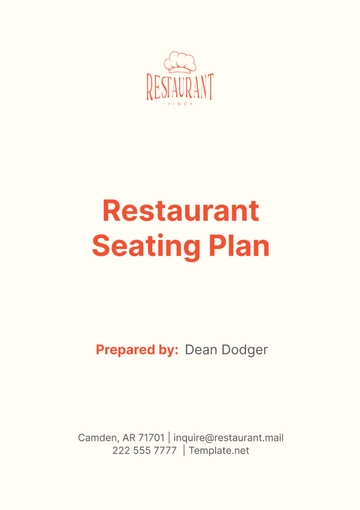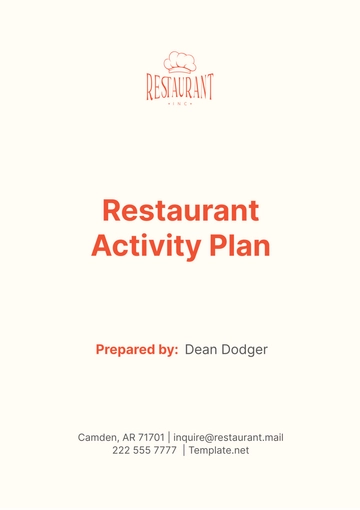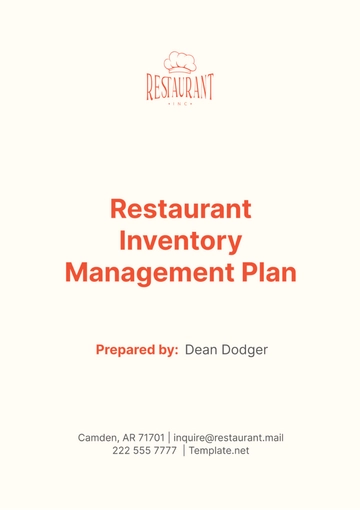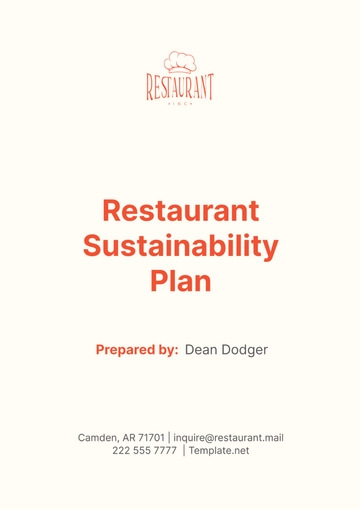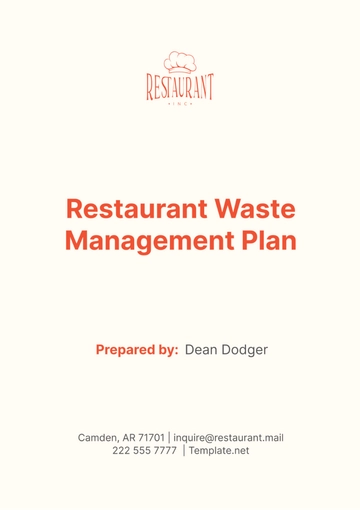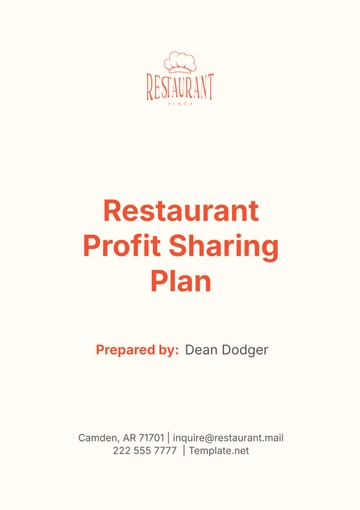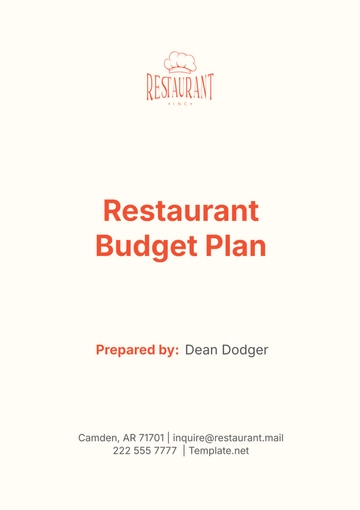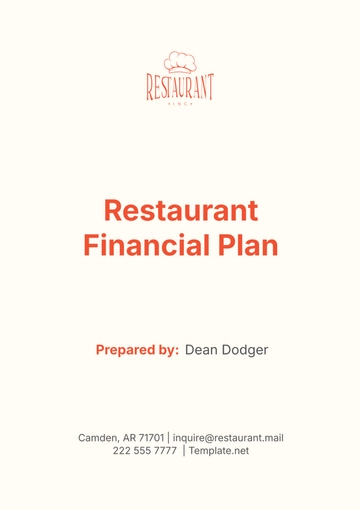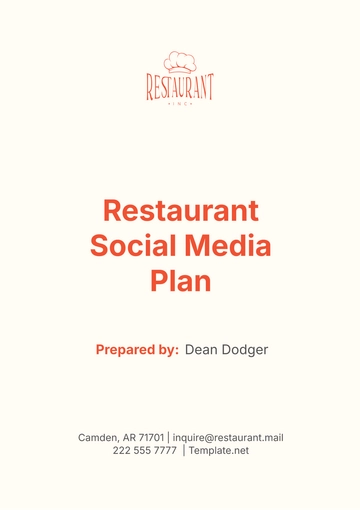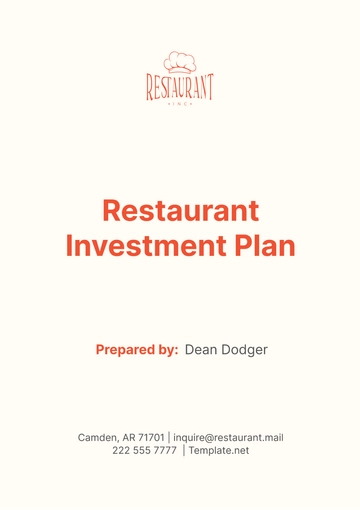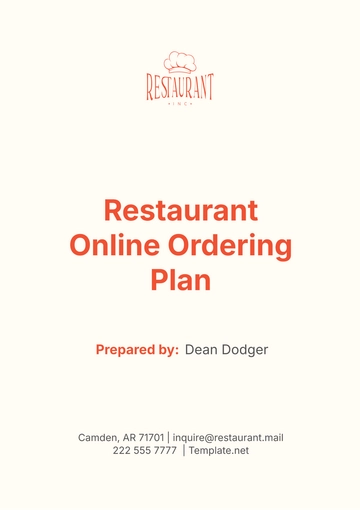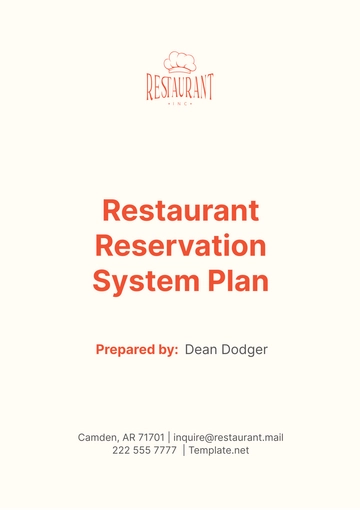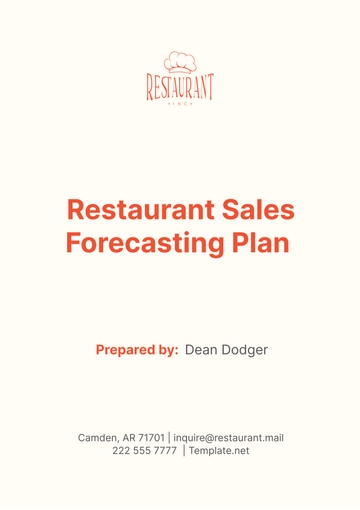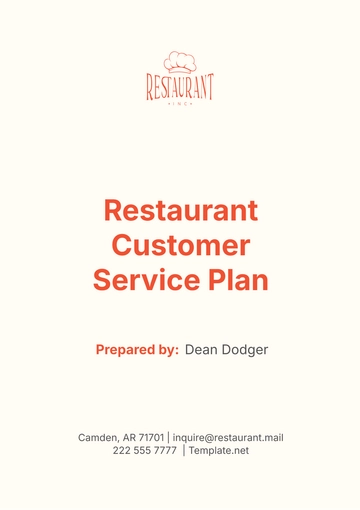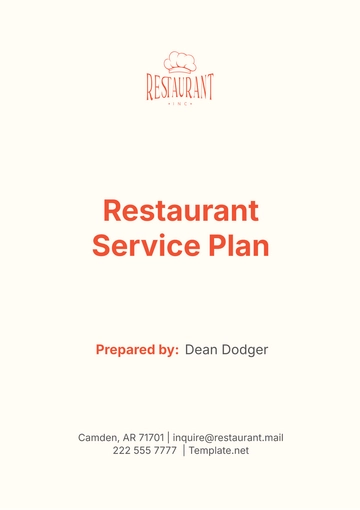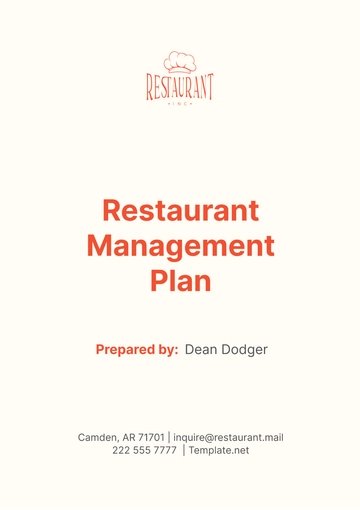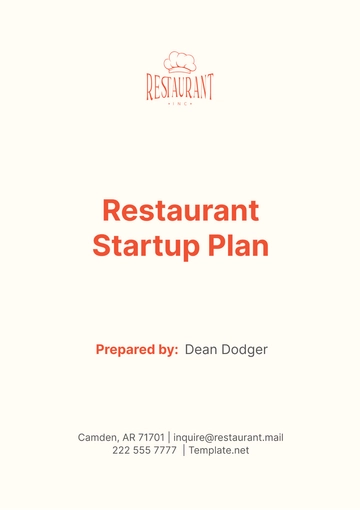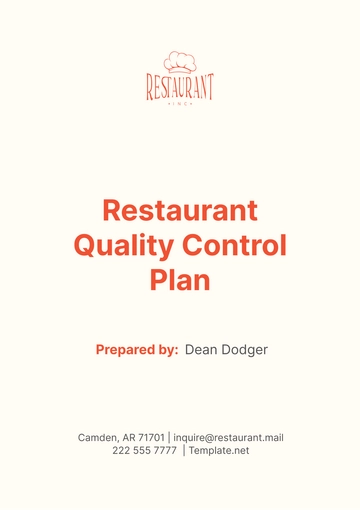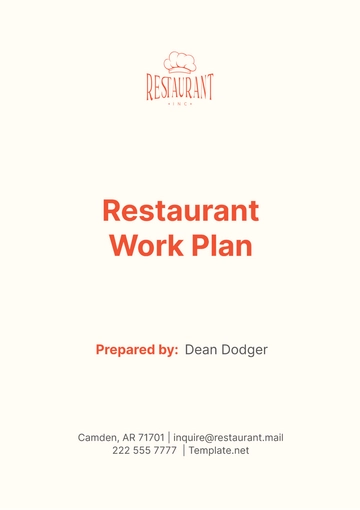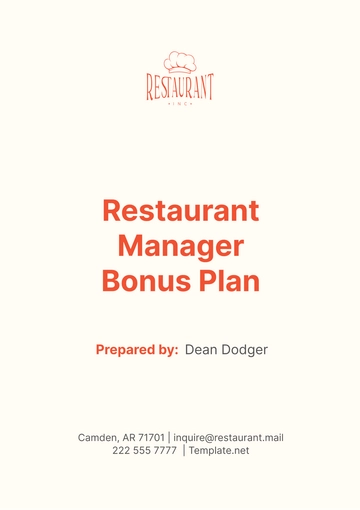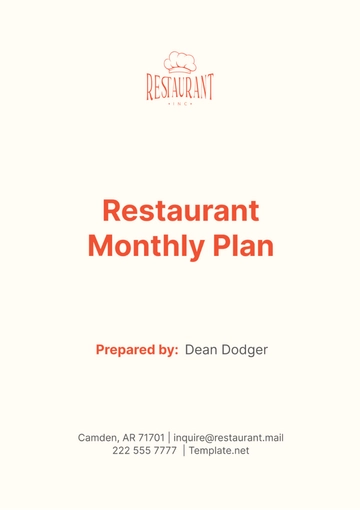Free Temporary Restaurant Operational Plan
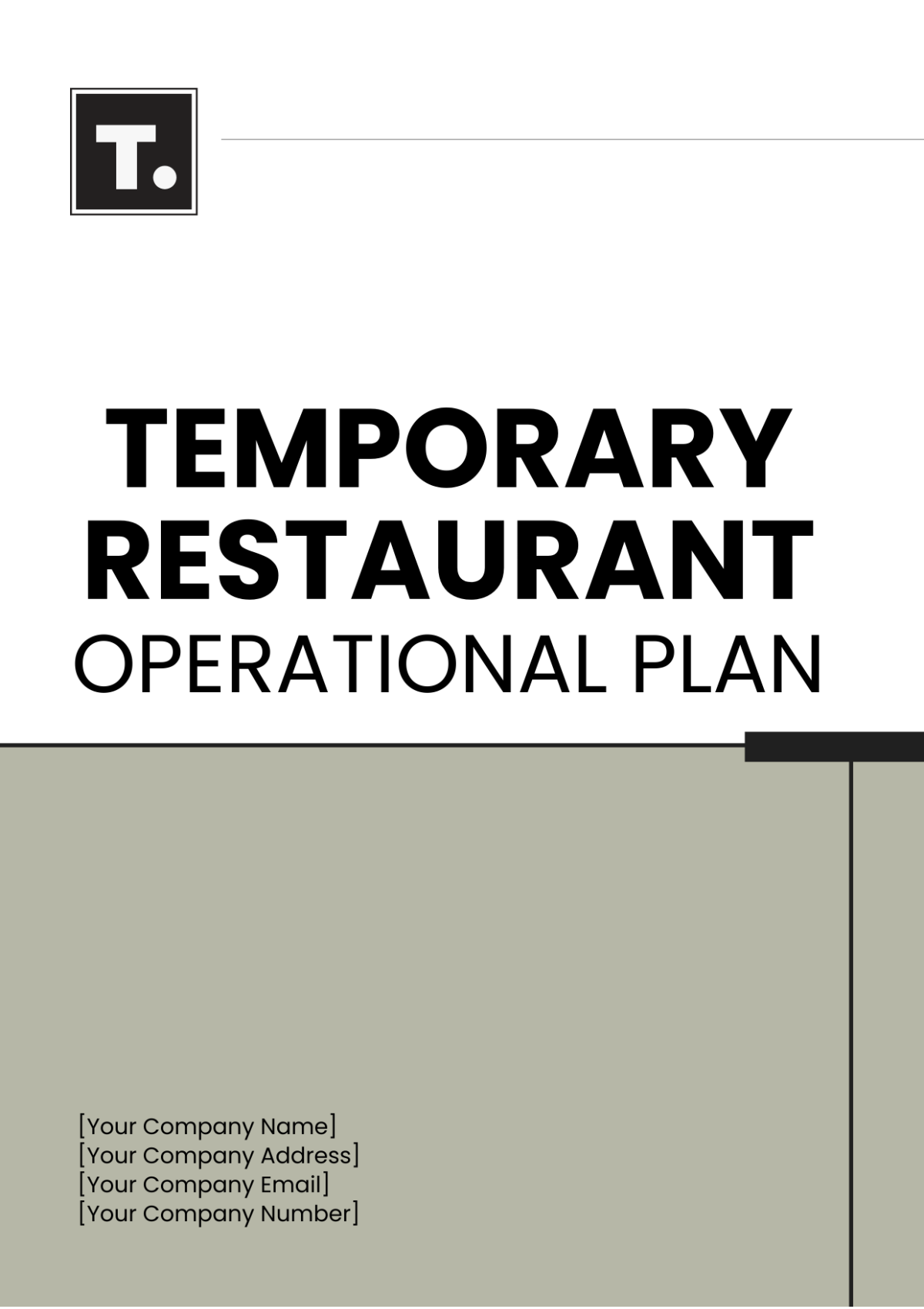
I. Introduction
Welcome to the Temporary Restaurant Operational Plan. This plan outlines the procedures and protocols for running our restaurant on a temporary basis. Whether it's a pop-up event, seasonal dining experience, or catering for special occasions, this plan ensures smooth operations and exceptional service.
II. Staffing Plan
A. Roles and Responsibilities
[Your Name]: Oversees daily operations, coordinates staff, and ensures adherence to standards.
[Chef Name]: Leads kitchen operations, manages food preparation, and maintains quality.
[Front of House Staff]: Greets customers, takes orders, and provides excellent service.
[Back of House Staff]: Assists with food preparation, dishwashing, and kitchen cleanliness.
B. Hiring and Training
Conduct interviews to hire temporary staff members with relevant experience.
Provide training on restaurant policies, procedures, and customer service standards.
C. Scheduling
Develop a flexible schedule to accommodate peak hours and special events.
Ensure adequate staffing levels to meet customer demand.
III. Food Preparation and Handling
A. Sourcing Ingredients
Partner with local suppliers to procure fresh, high-quality ingredients.
Verify the quality and freshness of all food items upon delivery.
B. Food Safety Standards
Implement HACCP principles to prevent foodborne illnesses.
Train staff on proper food handling, storage, and temperature control.
C. Menu Development
Create a diverse menu featuring seasonal ingredients and culinary specialties.
Offer options for dietary restrictions and preferences, such as vegetarian or gluten-free dishes.
IV. Health and Safety Protocols
A. Sanitation Practices
Establish a cleaning schedule for all areas of the restaurant, including kitchens, dining areas, and restrooms.
Provide hand sanitizing stations for staff and customers.
B. Emergency Procedures
Develop protocols for responding to emergencies, such as fires, medical incidents, or security threats.
Conduct regular drills to ensure staff are prepared to handle emergencies effectively.
V. Customer Service Standards
A. Service Excellence
Train staff to greet customers warmly, answer questions, and address concerns promptly.
Encourage a friendly and welcoming atmosphere to enhance the dining experience.
B. Customer Feedback
Implement a system for collecting and responding to customer feedback.
Use feedback to identify areas for improvement and enhance customer satisfaction.
VI. Logistics and Equipment
A. Equipment Requirements
Ensure all kitchen equipment is in good working condition and meets safety standards.
Maintain an inventory of supplies and equipment to prevent shortages during service.
B. Supply Chain Management
Coordinate with suppliers to ensure timely delivery of ingredients and supplies.
Monitor inventory levels and reorder as needed to avoid stockouts.
VII. Marketing and Promotion
A. Promotional Strategies
Utilize social media platforms to promote upcoming events and special offers.
Partner with local businesses or event organizers to reach new customers.
B. Branding and Identity
Maintain consistent branding across all marketing materials and communication channels.
Highlight the unique features and offerings of the temporary restaurant to attract customers.
VIII. Financial Plan
A. Budgeting
Estimate expenses for staffing, ingredients, equipment rental, marketing, and other operational costs.
Set pricing strategies to ensure profitability while remaining competitive in the market.
B. Revenue Projections
Forecast sales based on expected foot traffic, average spending per customer, and event attendance.
Monitor sales performance and adjust strategies as needed to achieve revenue targets.
C. Financial Controls
Implement systems for tracking expenses, monitoring cash flow, and reconciling accounts.
Review financial reports regularly to assess performance and identify opportunities for improvement.
Financial Projections Table
Item | Estimated Cost ($) | Actual Cost ($) |
|---|---|---|
Staffing | $5,000 | $4,800 |
Ingredients | $3,000 | $2,500 |
Equipment Rental | $1,500 | $1,200 |
Marketing and Promotion | $1,200 | $1,000 |
Other Expenses | $800 | $700 |
Total Expenses | $11,500 | $10,200 |
Projected Revenue | $15,000 | $14,500 |
IX. Compliance and Permits
A. Regulatory Requirements
Obtain necessary permits and licenses for operating a temporary restaurant in [Your Company Address].
Ensure compliance with health and safety regulations, zoning ordinances, and food service guidelines.
B. Insurance Coverage
Secure insurance coverage for liability, property damage, and other potential risks associated with temporary operations.
Review policies annually to ensure adequate coverage and minimize financial exposure.
X. Contingency Plans
A. Risk Assessment
Identify potential risks and disruptions that could impact operations, such as inclement weather or equipment failure.
Develop contingency plans to mitigate risks and maintain continuity of service.
B. Crisis Management
Establish communication protocols for notifying staff and customers in the event of an emergency or unplanned closure.
Work with local authorities and emergency services to coordinate response efforts as needed.
XI. SWOT Analysis
Strengths | Weaknesses |
|---|---|
- Experienced staff | - Limited seating |
- Unique menu items | - Reliance on seasonal ingredients |
- Strong brand identity | - Higher overhead costs |
Opportunities | Threats |
- Growing demand for Italian cuisine | - Competition from nearby restaurants |
- Expansion into catering and events | - Economic downturn affecting consumer spending |
- Partnerships with local businesses | - Supply chain disruptions |
- 100% Customizable, free editor
- Access 1 Million+ Templates, photo’s & graphics
- Download or share as a template
- Click and replace photos, graphics, text, backgrounds
- Resize, crop, AI write & more
- Access advanced editor
Introducing the Temporary Restaurant Operational Plan Template, meticulously crafted by Template.net for detailed planning and management of pop-up and temporary restaurant operations. This customizable document empowers restaurateurs to outline their operational goals, menu planning, staffing requirements, health and safety protocols, and resource allocations. With editable features and a user-friendly layout, it facilitates tailored operational planning to meet specific event objectives and regulatory standards. Streamline your temporary restaurant setup process and gain valuable insights into optimizing workflows, ensuring food quality, and managing resources efficiently. Elevate your pop-up restaurant’s success with this versatile template, your essential tool for delivering outstanding culinary experiences in temporary settings.
You may also like
- Finance Plan
- Construction Plan
- Sales Plan
- Development Plan
- Career Plan
- Budget Plan
- HR Plan
- Education Plan
- Transition Plan
- Work Plan
- Training Plan
- Communication Plan
- Operation Plan
- Health And Safety Plan
- Strategy Plan
- Professional Development Plan
- Advertising Plan
- Risk Management Plan
- Restaurant Plan
- School Plan
- Nursing Home Patient Care Plan
- Nursing Care Plan
- Plan Event
- Startup Plan
- Social Media Plan
- Staffing Plan
- Annual Plan
- Content Plan
- Payment Plan
- Implementation Plan
- Hotel Plan
- Workout Plan
- Accounting Plan
- Campaign Plan
- Essay Plan
- 30 60 90 Day Plan
- Research Plan
- Recruitment Plan
- 90 Day Plan
- Quarterly Plan
- Emergency Plan
- 5 Year Plan
- Gym Plan
- Personal Plan
- IT and Software Plan
- Treatment Plan
- Real Estate Plan
- Law Firm Plan
- Healthcare Plan
- Improvement Plan
- Media Plan
- 5 Year Business Plan
- Learning Plan
- Marketing Campaign Plan
- Travel Agency Plan
- Cleaning Services Plan
- Interior Design Plan
- Performance Plan
- PR Plan
- Birth Plan
- Life Plan
- SEO Plan
- Disaster Recovery Plan
- Continuity Plan
- Launch Plan
- Legal Plan
- Behavior Plan
- Performance Improvement Plan
- Salon Plan
- Security Plan
- Security Management Plan
- Employee Development Plan
- Quality Plan
- Service Improvement Plan
- Growth Plan
- Incident Response Plan
- Basketball Plan
- Emergency Action Plan
- Product Launch Plan
- Spa Plan
- Employee Training Plan
- Data Analysis Plan
- Employee Action Plan
- Territory Plan
- Audit Plan
- Classroom Plan
- Activity Plan
- Parenting Plan
- Care Plan
- Project Execution Plan
- Exercise Plan
- Internship Plan
- Software Development Plan
- Continuous Improvement Plan
- Leave Plan
- 90 Day Sales Plan
- Advertising Agency Plan
- Employee Transition Plan
- Smart Action Plan
- Workplace Safety Plan
- Behavior Change Plan
- Contingency Plan
- Continuity of Operations Plan
- Health Plan
- Quality Control Plan
- Self Plan
- Sports Development Plan
- Change Management Plan
- Ecommerce Plan
- Personal Financial Plan
- Process Improvement Plan
- 30-60-90 Day Sales Plan
- Crisis Management Plan
- Engagement Plan
- Execution Plan
- Pandemic Plan
- Quality Assurance Plan
- Service Continuity Plan
- Agile Project Plan
- Fundraising Plan
- Job Transition Plan
- Asset Maintenance Plan
- Maintenance Plan
- Software Test Plan
- Staff Training and Development Plan
- 3 Year Plan
- Brand Activation Plan
- Release Plan
- Resource Plan
- Risk Mitigation Plan
- Teacher Plan
- 30 60 90 Day Plan for New Manager
- Food Safety Plan
- Food Truck Plan
- Hiring Plan
- Quality Management Plan
- Wellness Plan
- Behavior Intervention Plan
- Bonus Plan
- Investment Plan
- Maternity Leave Plan
- Pandemic Response Plan
- Succession Planning
- Coaching Plan
- Configuration Management Plan
- Remote Work Plan
- Self Care Plan
- Teaching Plan
- 100-Day Plan
- HACCP Plan
- Student Plan
- Sustainability Plan
- 30 60 90 Day Plan for Interview
- Access Plan
- Site Specific Safety Plan
